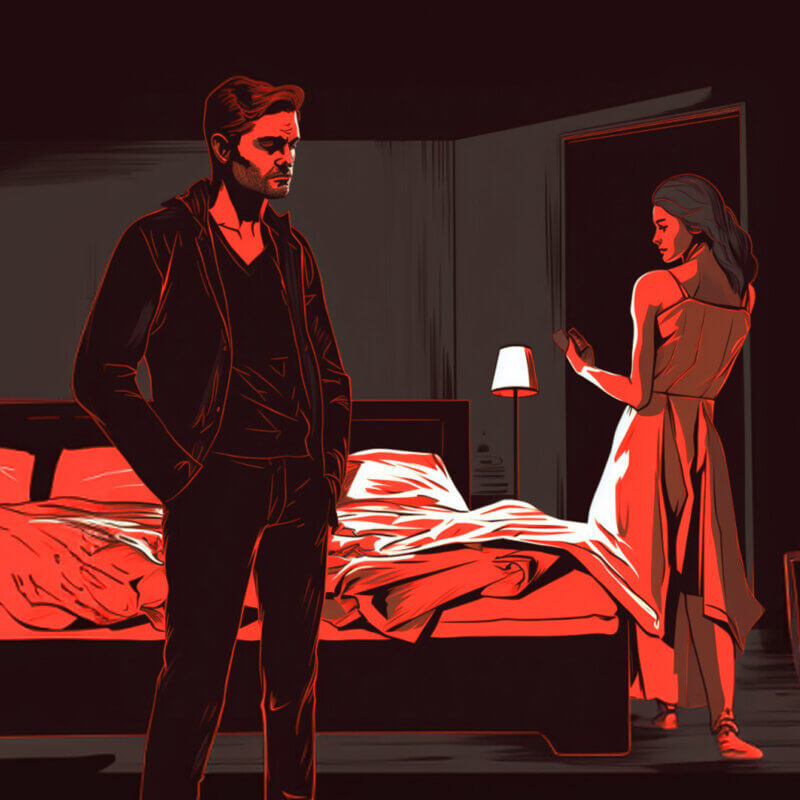How Do We Put an End to Sex Trafficking? By Addressing Demand.
Sex trafficking is a massive global injustice enslaving millions of people around the world. 99% of those victims are women and children.
Every year, millions of new victims will be coerced, deceived, or taken and sold into a world where they will be forced to sell their bodies and souls for the sexual gratification of men.
The issue of sex trafficking would end today if men stopped buying sex. Let that sink in for a moment.
At its root, sex trafficking is the result of male demand for prostitution. Pimps and traffickers have generated a hundred billion dollar per year sex trafficking industry by acquiring supply to meet that demand by any means necessary.
If sex trafficking is fueled by men’s demand for prostitution, then there is ultimately only one way to abolish it. We must eliminate the demand and reject the intrinsic “right” men feel they have to vulnerable women’s bodies.
In 1999, after 30 years of research and listening to the experiences of hundreds of women in prostitution, Sweden introduced a new law to do this very thing. Known as the Abolitionist Model (aka Equality Model or Nordic Model), this law addresses the demand for prostitution head on by criminalizing the act of buying sex, and holding accountable the pimps, brothel owners, and traffickers who profit from selling people for sex.
It also creates a shift in how women in prostitution are treated. Rather than criminalize the women who are being exploited in prostitution, the Abolitionist Model offers them assistance and social support services to help them build a sustainable life outside of prostitution.
Since its adoption in Sweden, this law has had a dramatic impact on reducing both prostitution and sex trafficking. Street prostitution has been cut in half. The number of men buying sex has been cut in half.
The former Deputy Prime Minister of Sweden, Margareta Winberg, shared, “I believe that we will never succeed in combating trafficking in women if we do not simultaneously work to abolish prostitution…”
RELATED: Is “Sex Work” a Legitimate Job?
Sweden now has the lowest number of sex trafficking victims in the entire European Union and due to this incredible success, more and more countries around the world are adopting the Abolitionist Model. By doing so, they are protecting the rights of women to obtain a life free from exploitation.
Countries that criminalize the purchase of sex as a felony level offense and de-criminalize the vulnerable women who sell it, instead offering them help and social services, have seen astounding results.
The Key to Ending Sex Trafficking: The Abolitionist Model
The Abolitionist Model, also known as the Equality Model or Nordic Model, focuses on ending the demand for commercial sex and is a the key to eradicating sex trafficking once and for all.
Prostitution is decriminalized only for the person being sold. It is illegal to purchase sex, or promote or facilitate the purchase of sex in any way. Instead of arrests, this asymmetrical legal model helps connect prostituted individuals to services related to substance abuse, mental health issues, and counseling. It deters demand by putting in place meaningful consequences for sex buyers, such as punitive fines and/or jail time.
As a result, demand is reduced. Sweden, Norway, Iceland, Northern Ireland, Canada, France, Ireland, and most recently, Israel have implemented the Abolitionist Model. In the U.S. some cities have used principles from this model, focusing their policing efforts on deterring demand rather than on arresting prostituted individuals. When properly implemented (meaning law enforcement is trained on the policy), the impact and occurrence of prostitution is reduced by over half, and in some cases by up to 70% (Danna, 2012; Demand Forum, 2018; Farley, 2011; Rasmussen, 2014).
It isn’t enough to merely rescue the exploited—we have to cut off the exploitation industry at its roots. If we hope to one day achieve a world where no one is trafficked or sold for sex, it starts with every country adopting the Abolitionist Model. This is the key to ending sex trafficking.
Fuel the fight to end global sex trafficking.





